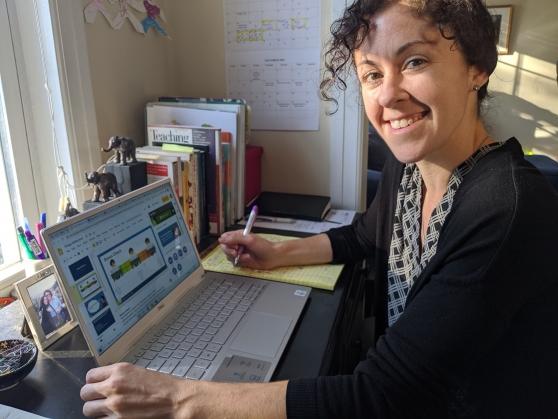
Lisa Berke says sharing memoirs helps her students grow up to be responsible citizens.
In my course on Holocaust literature, I teach my high school students through the lens of a memoir.
The memoir is one of my favorite types of stories because I believe in its ability to cultivate empathy. Memoirs are instrumental in telling stories of the Holocaust because the struggles faced by the victims of the Nazis are unlike anything students could ever imagine. The memoir form allows them to imagine it. Because the inhumanity of the Nazis can be overwhelming, I begin with a lighter approach. I start the course by asking my sophomores to tell me the stories of their names. I share mine first. In my modeling, I tell them my name, my nicknames and the story of how I came to have my name.
The beautiful and personal projects students create when completing this assignment help me learn about their families, their cultures, their values — and their ability to write a well-developed paragraph. But the exercise also introduces memoir writing and starts a class narrative.
With students learning remotely, I’ve incorporated more multimedia resources into the course. I weave two-minute interviews with Holocaust survivors into most lessons now; they help further ideas about conflict and characterization. Since lessons need to be more interactive (now that students are sitting for hours at a time), I’ve begun using platforms like Pear Deck, which allows students to interact with your Google Slide presentation, to engage students in real time and get more responses from the class.
The first Holocaust memoir we read is “Night” by Elie Wiesel. He’s 15 years old and so are they. Like them, Elie is making the transition from a child to an adult. Wiesel addresses many of the philosophical and personal conflicts of Holocaust survivors. Through his use of literary tools, Wiesel allows readers to feel history. In my class, we always pause to talk about the moment when the teenage Elie confesses to being
angry with his father. Though hardly the most traumatizing moment, in the scene Wiesel’s bitterness and guilt become palpable. When I ask my students if any of them have ever been angry with their parents, hands usually go up. If they don’t, I raise mine to let them know it’s a shared experience for all of us. What usually follows is laughter and a few more hands in the air.
I seize on that moment to have the students write letters to someone they are angry with in order to help them process their own feelings and connect with Wiesel. I begin with clarifying questions for the whole class (who are you angry at?) and then give them two or three probing questions to start their letter (how did it make you feel?). This exercise always produces powerful writing.
Then students become the observers. I ask them to describe Wiesel’s tone and give evidence to support their analysis. Wiesel’s lack of sentiment helps them understand the scarring effects of the Holocaust.
We have to keep sharing the stories of the Holocaust. The memoirs of those who lived through that dark moment in history become more important as the world loses more survivors. As educators, we can use the power of memoir to help our students to personally connect to the Holocaust and develop empathy in the process.
Lisa Berke is an English teacher at Edward R. Murrow HS in Brooklyn.